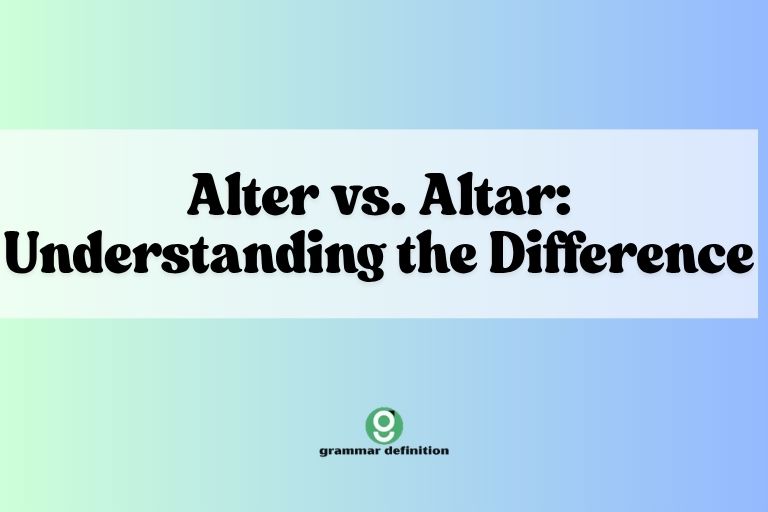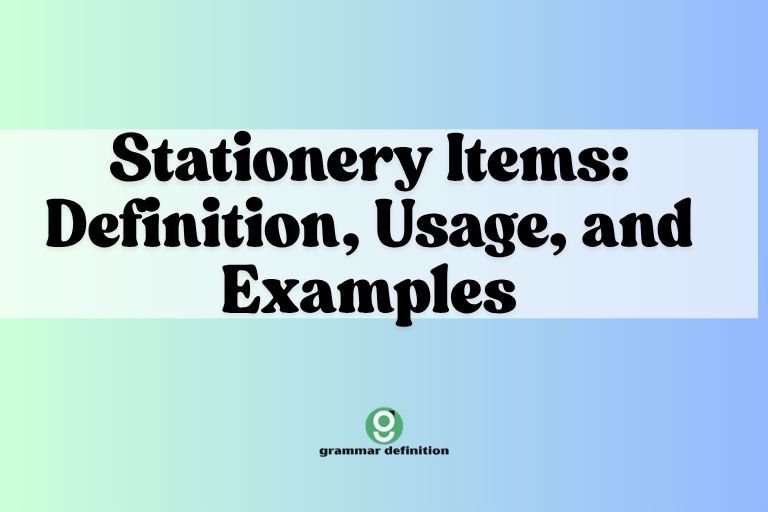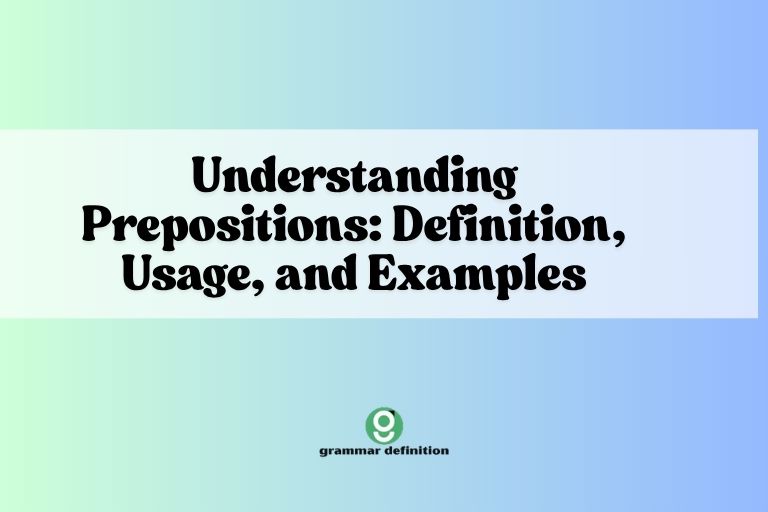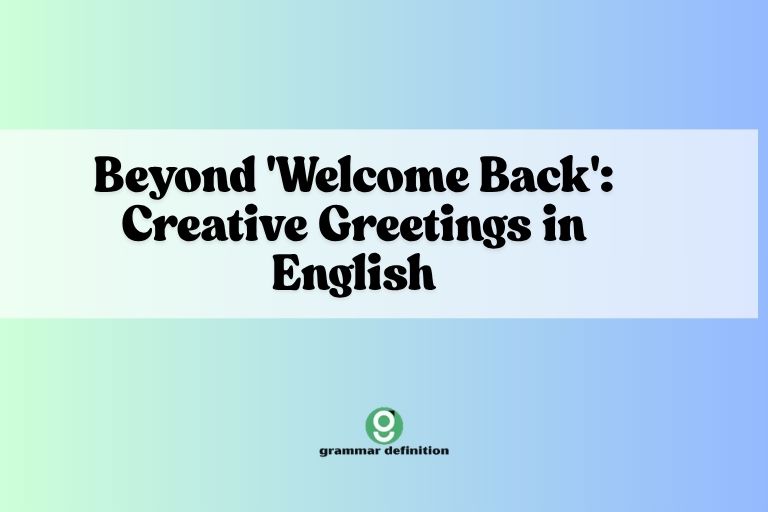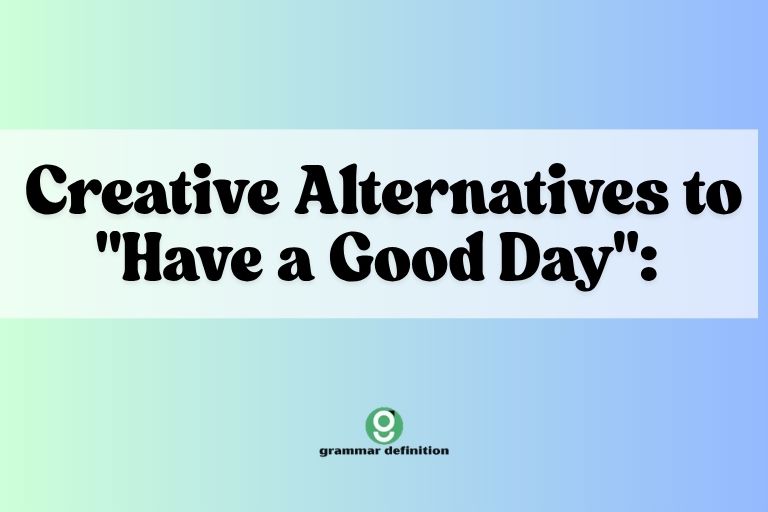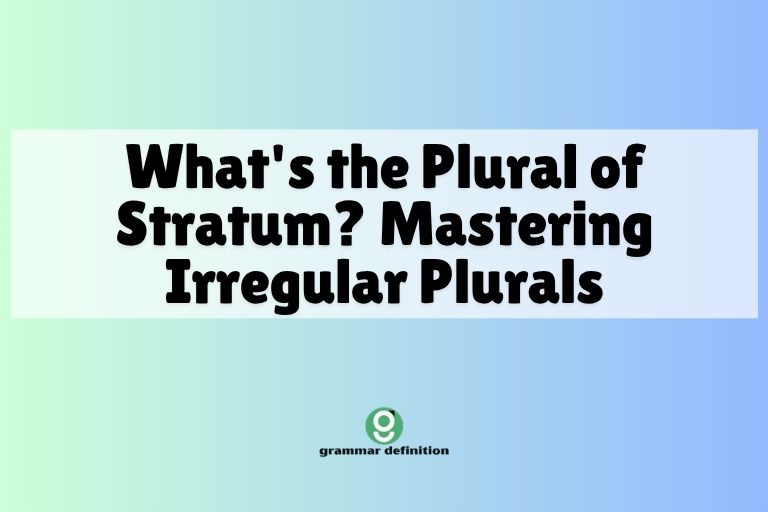To vs. Too: Mastering the Difference in English Grammar
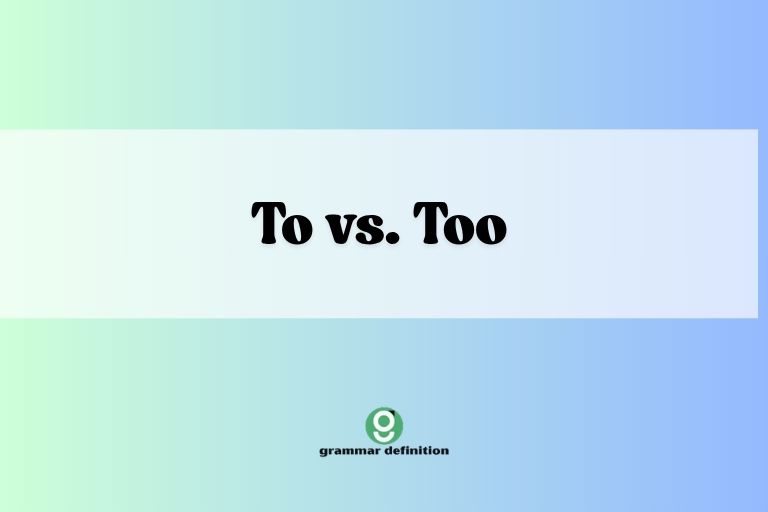
Understanding the difference between “to” and “too” is crucial for clear and effective communication in English. These homophones are often confused, leading to errors in writing and speaking.
This article provides a comprehensive guide to mastering the usage of “to” and “too,” covering their definitions, structural roles, and common pitfalls. Whether you’re a beginner or an advanced learner, this guide will help you confidently use these words correctly.
Table of Contents
- Introduction
- Definitions of To and Too
- Structural Breakdown
- Types and Categories
- Examples of To and Too
- Usage Rules
- Common Mistakes
- Practice Exercises
- Advanced Topics
- FAQ
- Conclusion
Definitions of To and Too
Distinguishing between “to” and “too” is essential for accurate writing. They sound alike but have different meanings and grammatical roles.
Understanding these differences prevents miscommunication and clarifies your writing.
Definition of “To”
“To” primarily functions as a preposition or as part of an infinitive verb. As a preposition, it indicates direction, purpose, or relationship. When used with a verb, it forms the infinitive, which is the base form of the verb (e.g., to eat, to sleep). “To” is one of the most versatile words in the English language due to its many functions.
Definition of “Too”
“Too” is an adverb that means “also” or “excessively.” When it means “also,” it adds something to a previous statement. When it means “excessively,” it indicates that something is more than necessary or desirable. The correct usage of “too” often depends on the context in which it is used, ensuring clarity and precision. The word “too” is often used to express an opinion.
Structural Breakdown
The structure of sentences using “to” and “too” differs significantly based on their grammatical functions. Recognizing these structural differences helps in using these words correctly.
Structure with “To”
When “to” functions as a preposition, it is followed by a noun or pronoun, creating a prepositional phrase that modifies another part of the sentence. When “to” forms an infinitive, it precedes the base form of a verb. The structure can be summarized as: to + noun/pronoun (preposition) or to + verb (infinitive).
Structure with “Too”
“Too” typically appears before an adjective or adverb to intensify it or at the end of a sentence to mean “also.” The structure often looks like this: too + adjective/adverb or the sentence structure with ‘also’. The placement of “too” affects the meaning of the sentence, so care should be taken.
Types and Categories
“To” and “too” have distinct categories based on their roles in sentences. Understanding these categories will aid in correct usage and comprehension.
Types of “To”
- Preposition: Indicates direction, location, time, or purpose.
- Infinitive Marker: Precedes a verb to form the infinitive.
Types of “Too”
- Adverb of Excess: Indicates something is more than enough.
- Adverb of Addition: Means “also” or “in addition.”
Examples of To and Too
The following examples illustrate the different usages of “to” and “too” in various contexts. These examples are categorized to provide clarity and understanding.
Examples of “To”
“To” as a Preposition: The following table provides examples of ‘to’ being used as a preposition.
| Sentence | Explanation |
|---|---|
| I am going to the store. | Indicates direction. |
| This gift is to you. | Indicates recipient. |
| We need to finish this project by Friday. | Indicates a deadline. |
| She is related to him. | Indicates relationship. |
| They are listening to music. | Indicates activity. |
| He walked to the park. | Indicates direction. |
| She gave the book to her friend. | Indicates recipient. |
| The meeting is scheduled to start at 9 AM. | Indicates time. |
| I need to talk to my boss. | First ‘to’ indicates infinitive, second indicates recipient. |
| They traveled to Europe last summer. | Indicates destination. |
| I prefer coffee to tea. | Indicates preference. |
| The key to success is hard work. | Indicates the means to achieve something. |
| He is accustomed to waking up early. | Indicates habit. |
| She dedicated her life to helping others. | Indicates purpose or dedication. |
| The road to the city was long and winding. | Indicates direction. |
| I look forward to seeing you again. | Indicates anticipation. |
| He is committed to his studies. | Indicates dedication. |
| We went to the beach for vacation. | Indicates destination. |
| She is allergic to nuts. | Indicates sensitivity. |
| He pointed to the map. | Indicates direction or location. |
| The answer to the question is obvious. | Indicates solution or response. |
| She contributed to the charity. | Indicates contribution. |
| He is similar to his brother. | Indicates resemblance. |
| We are going to a concert tonight. | Indicates destination. |
| She is thankful to her parents. | Indicates gratitude. |
“To” as an Infinitive Marker: The following table provides examples of ‘to’ being used as an infinitive marker.
| Sentence | Explanation |
|---|---|
| I want to eat. | Forms the infinitive “to eat.” |
| They need to study. | Forms the infinitive “to study.” |
| She likes to dance. | Forms the infinitive “to dance.” |
| We have to leave. | Forms the infinitive “to leave.” |
| He decided to stay. | Forms the infinitive “to stay.” |
| I love to read books. | Forms the infinitive “to read.” |
| She promised to help. | Forms the infinitive “to help.” |
| He forgot to lock the door. | Forms the infinitive “to lock.” |
| We plan to travel next year. | Forms the infinitive “to travel.” |
| They hope to win the game. | Forms the infinitive “to win.” |
| I need to buy groceries. | Forms the infinitive “to buy.” |
| She wants to learn French. | Forms the infinitive “to learn.” |
| He tried to fix the car. | Forms the infinitive “to fix.” |
| We expect to arrive on time. | Forms the infinitive “to arrive.” |
| They offered to pay for dinner. | Forms the infinitive “to pay.” |
| I prefer to walk rather than drive. | Forms the infinitive “to walk.” |
| She agreed to meet us later. | Forms the infinitive “to meet.” |
| He managed to finish the project. | Forms the infinitive “to finish.” |
| We intend to visit the museum. | Forms the infinitive “to visit.” |
| They attempted to climb the mountain. | Forms the infinitive “to climb.” |
| I like to listen to music. | Forms the infinitive “to listen.” |
| She is learning to play the piano. | Forms the infinitive “to play.” |
| He is trying to improve his skills. | Forms the infinitive “to improve.” |
| We are planning to have a party. | Forms the infinitive “to have.” |
| They are excited to see the movie. | Forms the infinitive “to see.” |
Examples of “Too”
“Too” as “Also”: The following table provides examples of ‘too’ being used as ‘also’.
| Sentence | Explanation |
|---|---|
| I want to go, too. | Means “I also want to go.” |
| She likes chocolate, and I do, too. | Means “I also like chocolate.” |
| He is coming to the party, too. | Means “He is also coming to the party.” |
| We are going to the beach, and they are, too. | Means “They are also going to the beach.” |
| They enjoy playing games, and we do, too. | Means “We also enjoy playing games.” |
| I will have a coffee, and she will, too. | Means “She will also have a coffee.” |
| She is studying hard, and he is, too. | Means “He is also studying hard.” |
| He likes to travel, and I do, too. | Means “I also like to travel.” |
| We watched the movie, and they did, too. | Means “They also watched the movie.” |
| They ate pizza, and we did, too. | Means “We also ate pizza.” |
| I have finished my homework, and she has, too. | Means “She has also finished her homework.” |
| She is going to the gym, and I am, too. | Means “I am also going to the gym.” |
| He will be attending the conference, and we will, too. | Means “We will also be attending the conference.” |
| We went to the concert, and they did, too. | Means “They also went to the concert.” |
| They are happy, and we are, too. | Means “We are also happy.” |
| I am tired, and she is, too. | Means “She is also tired.” |
| She is excited, and he is, too. | Means “He is also excited.” |
| He is busy, and I am, too. | Means “I am also busy.” |
| We are ready, and they are, too. | Means “They are also ready.” |
| They are late, and we are, too. | Means “We are also late.” |
| I am hungry, and she is, too. | Means “She is also hungry.” |
| She is cold, and he is, too. | Means “He is also cold.” |
| He is sad, and I am, too. | Means “I am also sad.” |
| We are surprised, and they are, too. | Means “They are also surprised.” |
| They are impressed, and we are, too. | Means “We are also impressed.” |
“Too” as “Excessively”: The following table provides examples of ‘too’ being used as ‘excessively’.
| Sentence | Explanation |
|---|---|
| This coffee is too hot. | Indicates the coffee is excessively hot. |
| The music is too loud. | Indicates the music is excessively loud. |
| He is too young to drive. | Indicates he is excessively young to drive. |
| The shirt is too big for me. | Indicates the shirt is excessively big. |
| It’s too late to apologize. | Indicates it’s excessively late to apologize. |
| The soup is too salty. | Indicates the soup is excessively salty. |
| The movie was too long. | Indicates the movie was excessively long. |
| The test was too difficult. | Indicates the test was excessively difficult. |
| The dress is too expensive. | Indicates the dress is excessively expensive. |
| The room is too small. | Indicates the room is excessively small. |
| The shoes are too tight. | Indicates the shoes are excessively tight. |
| The water is too cold. | Indicates the water is excessively cold. |
| The cake is too sweet. | Indicates the cake is excessively sweet. |
| The car is too slow. | Indicates the car is excessively slow. |
| The job is too demanding. | Indicates the job is excessively demanding. |
| The question is too complicated. | Indicates the question is excessively complicated. |
| The book is too boring. | Indicates the book is excessively boring. |
| The exercise is too easy. | Indicates the exercise is excessively easy. |
| The problem is too complex. | Indicates the problem is excessively complex. |
| The task is too time-consuming. | Indicates the task is excessively time-consuming. |
| The explanation is too confusing. | Indicates the explanation is excessively confusing. |
| The answer is too obvious. | Indicates the answer is excessively obvious. |
| The situation is too risky. | Indicates the situation is excessively risky. |
| The decision is too important. | Indicates the decision is excessively important. |
| The information is too detailed. | Indicates the information is excessively detailed. |
Usage Rules
Proper usage of “to” and “too” requires adherence to specific rules. These rules cover both their grammatical functions and their contextual appropriateness.
Rules for Using “To”
- Use “to” as a preposition to indicate direction, recipient, or relationship.
- Use “to” before a verb to form the infinitive.
- Ensure the context requires a preposition or infinitive verb.
Rules for Using “Too”
- Use “too” to mean “also” at the end of a sentence or clause.
- Use “too” to mean “excessively” before an adjective or adverb.
- Avoid using “too” when “very” or “extremely” is more appropriate.
Common Mistakes
Confusing “to” and “too” is a common error, often stemming from their similar pronunciation. Recognizing these mistakes is the first step towards correcting them.
Incorrect: I am going too the store.
Correct: I am going to the store.
Incorrect: This coffee is to hot.
Correct: This coffee is too hot.
Incorrect: I want to go to, but I’m busy.
Correct: I want to go, too, but I’m busy.
Practice Exercises
Test your understanding of “to” and “too” with these exercises. Each exercise focuses on different aspects of their usage.
Exercise 1: Fill in the Blanks
Fill in the blanks with either “to” or “too”.
| Question | Answer |
|---|---|
| I am going ____ the park. | to |
| This soup is ____ salty. | too |
| She wants ____ dance. | to |
| He is coming, ____. | too |
| It’s ____ late to apologize. | too |
| I need ____ study for the test. | to |
| This shirt is ____ small for me. | too |
| We are going ____ the movies tonight. | to |
| She likes ice cream, and I do, ____. | too |
| He is ____ young to watch that movie. | too |
Exercise 2: Error Correction
Identify and correct the errors in the following sentences.
| Incorrect Sentence | Correct Sentence |
|---|---|
| I am going to the store, to. | I am going to the store, too. |
| The coffee is to hot. | The coffee is too hot. |
| She wants too sing. | She wants to sing. |
| He is to tired to go out. | He is too tired to go out. |
| We need to study to. | We need to study, too. |
| It is to late to change our minds. | It is too late to change our minds. |
| She is going too the library. | She is going to the library. |
| I want too go with you. | I want to go with you. |
| He is to busy to help. | He is too busy to help. |
| They are coming to the party, to. | They are coming to the party, too. |
Exercise 3: Sentence Construction
Create sentences using “to” and “too” based on the given prompts.
| Prompt | Example Sentence |
|---|---|
| Use “to” as a preposition indicating direction. | I am traveling to Italy next month. |
| Use “too” to mean “also.” | She is coming to the concert, too. |
| Use “to” to form an infinitive. | I need to buy groceries today. |
| Use “too” to mean “excessively.” | The tea is too sweet for me. |
| Combine “to” and “too” in one sentence. | I want to go to the beach, too. |
| Use “to” to indicate purpose. | I went to the store to buy milk. |
| Use “too” to describe a feeling. | I am too excited about the trip. |
| Use “to” to show a relationship. | She is related to the queen. |
| Use “too” to comment on size. | This jacket is too big for me. |
| Use “to” to express an intention. | I intend to finish this project by Friday. |
Advanced Topics
For advanced learners, exploring complex aspects of “to” and “too” enhances their understanding and usage in nuanced contexts.
Advanced Usage of “To”
In advanced contexts, “to” can be part of idiomatic expressions or phrasal verbs, where its meaning might not be immediately obvious. Understanding these nuances is crucial for mastering the English language.
For example, the phrase “to and fro” means back and forth, and its meaning isn’t directly derived from the individual word “to”. Similarly, the use of “to” in phrasal verbs like “look forward to” requires understanding the entire phrase rather than just the preposition itself.
Recognizing these idiomatic usages comes with extensive reading and exposure to diverse English texts.
Advanced Usage of “Too”
The adverb “too” can be used in complex sentence structures to convey subtle meanings. For instance, “too + adjective + to + verb” structures can express a limitation or inability resulting from an excessive quality.
For example, “The problem is too complex to solve easily” indicates that the complexity of the problem prevents it from being solved easily. Additionally, understanding the intonation and stress patterns when using “too” can alter the emphasis and impact of the statement.
A rising intonation can express surprise or disbelief, while a falling intonation can convey resignation or acceptance. Mastering these subtle nuances enhances the expressive power of the language.
FAQ
Here are some frequently asked questions about “to” and “too.”
- Q: How can I easily remember the difference between “to” and “too”?
A: Think of “too” as having an extra “o,” which means “extra” or “also.” If you mean “also” or “excessively,” use “too.” If you mean direction or are forming an infinitive, use “to.” - Q: Is it ever correct to use “to” and “too” in the same sentence?
A: Yes, it is perfectly correct. For example, “I want to go to the beach, too.” This sentence uses “to” as part of the infinitive “to go” and “too” to mean “also.” - Q: Can “too” be used at the beginning of a sentence?
A: While less common, “too” can be used at the beginning of a sentence for emphasis, though it’s often considered informal. For example, “Too often, people make this mistake.” - Q: What is the difference between “too” and “very”?
A: “Too” indicates an excess, while “very” simply intensifies an adjective or adverb without implying excess. For example, “The coffee is very hot” simply states the coffee is hot, while “The coffee is too hot” implies it’s uncomfortably hot. - Q: How do I avoid confusing “to,” “too,” and “two”?
A: “To” is a preposition or infinitive marker, “too” means “also” or “excessively,” and “two” is the number 2. Remembering their definitions and practicing will help differentiate them. - Q: Are there any regional differences in the usage of “to” and “too”?
A: No, there are no significant regional differences in the usage of “to” and “too” in standard English. These words follow the same grammatical rules regardless of the region. - Q: Can I use “too” with nouns?
A: While “too” primarily modifies adjectives and adverbs, it can be used with nouns in certain constructions, such as “too much” or “too many.” For instance, “There is too much sugar in this coffee” or “There are too many people here.” - Q: What are some other words that are commonly confused with “to” and “too”?
A: Besides “two,” other commonly confused words include “there,” “their,” and “they’re,” as well as “your” and “you’re.” Paying close attention to the context and meaning will help differentiate these words.
Conclusion
Mastering the distinction between “to” and “too” significantly enhances your writing and communication skills. “To” serves as a versatile preposition and infinitive marker, while “too” functions as an adverb indicating excess or addition.
By understanding their definitions, structural roles, and usage rules, you can avoid common mistakes and express yourself with clarity and precision. Continued practice and attention to detail will solidify your understanding, making these words a seamless part of your English vocabulary.

